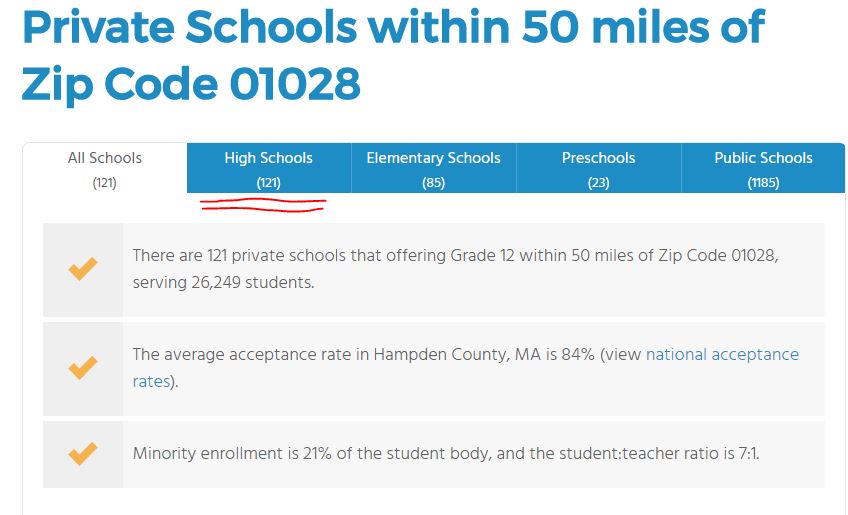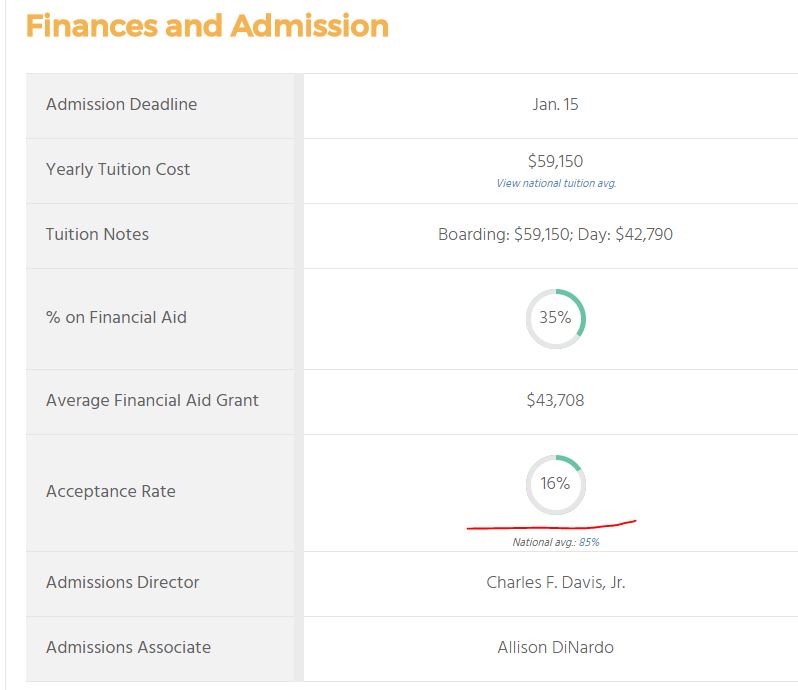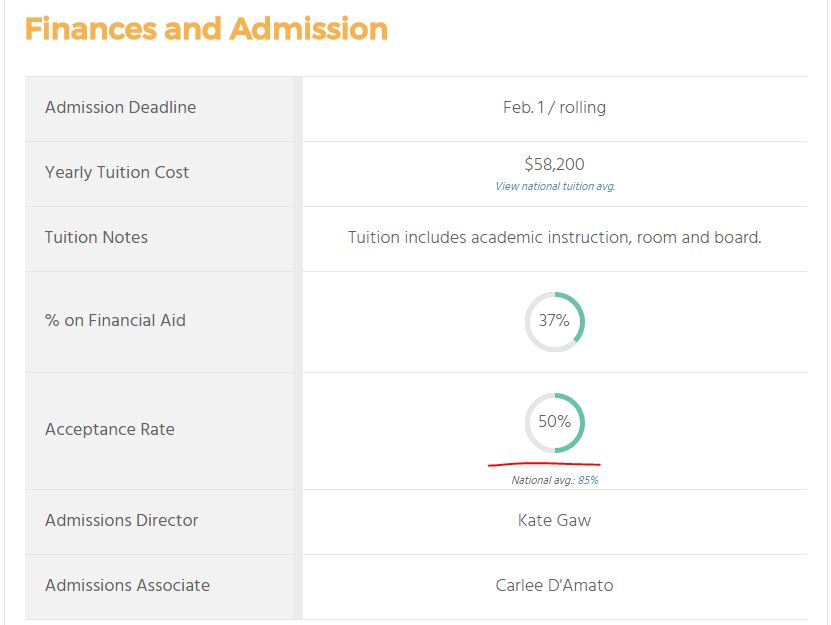As you begin thinking about private schools, you will add schools from various sources to your initial list of potential schools. That’s fine. Accept all suggestions and advice in the early stages of your search for the right school or schools. Friends will suggest schools which their children attend. Family will mention schools that your uncle or aunt attended. And so on. Finally, you will explore on your own. Private School Review is a great place to start because the site is devoted to private K-12 schools. The following screenshot gives you an idea of the number of schools within a fifty-mile radius of East Longmeadow, Massachusetts. (I selected that area because I am familiar with it as I have family there. Also, it is not a major urban area.)
After exploring schools and including all the other suggestions you will receive, you will most likely end up with a list of 5-10 schools. Now, this is where the private school search process becomes tricky. Why is that? Simply because you have to whittle that long list of potential schools down to a more manageable list of 2-3 schools. Selecting a school is not like buying a watch on Amazon. It’s a lot like buying a house. And just as with buying a house, you have to really like the house. You also have to convince yourself that it meets all your needs and requirements. The same rules of the road apply to choosing the right private school.
1. Don’t put all your eggs in one basket.
What am I talking about? I am cautioning you to include two safe schools on your shortlist. Safe schools are schools that you know your child can get into. Don’t forget that private schools do not have to admit your child and, furthermore, they don’t have to give any reason for not admitting her. The other schools on your shortlist can be more competitive schools. That’s up to you. For example, if you have always dreamed of your child attending Exeter, then go for it. If Exeter rejects her, at least you will have a couple of fine schools which will have accepted her. They may not be Exeter, but she will do just fine wherever she goes.
How do you determine how competitive schools are? Once again, Private School Review builds those metrics into its profiles of the private schools in its database. For example, here is the Acceptance Rate for Deerfield Academy in Deerfield, Massachusetts. A 16% Acceptance Rate makes Deerfield a competitive school.
And here is the Acceptance Rate for Wilbraham & Monson Academy. A 50% Acceptance Rate makes it less competitive than Deerfield, at least theoretically.
This is the reason why you need to balance your shortlist. You could visit Deerfield and discover that it has everything you are looking for. At the same time, Deerfield reviews your child’s admissions profile and determines that she is the kind of student they are looking for. Furthermore, your child’s profile scores in the top 25% of all applicants. Now, things don’t always work out that way. You and I have no idea what any given year’s applicant pool will look like at any given school. The variables are endless.
2. Match schools with your needs and requirements.
This is an important step. Each private school is unique. It offers its own academic curriculum which usually exceeds any state requirements. It has its own athletic program and extracurricular activities. This makes it difficult to compare private schools. Each is unique. It is up to you to figure out which schools best suit your needs and requirements.
Make sure schools match your specific needs. For example, if you have a child who has a mild learning disability you will want to confirm that the school has professional staff and curricula in place to take care of your child’s needs. Similarly, if you have a child who has autism spectrum disorder, you will want to make sure that the school has the professional staff to teach your child. Most private schools have small classes, but most of the time children with special needs thrive with 1 on 1 teaching. Make sure that the schools which you are evaluating offer the individual instruction your child needs.
In any case, once you have established your needs and requirements, then you need to find schools that will be good matches for your needs and requirements.
3. Consider hiring an educational consultant.
As you probably have begun to realize, finding the right private school is a multi-faceted process that takes time. Plan on investing about 50-60 hours in the research part of the project. Add another 24-48 hours per school visit, assuming that the schools are located 2-3 hours from your residence. That is the main reason why I recommend that you consider hiring an educational consultant. The Independent Educational Consultants Association (IECA) has a list of well-qualified consultants to choose from. The bottom line is that consultants know their schools. They have active networks of admissions professionals. They will be able to match your child’s admissions profile to schools that will be a good fit for your requirements.
If you are thinking that you would rather not spend money for a hefty professional fee, then ask yourself if you would buy a house without having an attorney review the contracts. Would you draft your own will? Professional educational consultants are worth every dollar. I know. I have done the school search process both ways. Once without a consultant. Once with. Without a consultant we naively applied to schools we liked, never thinking that our daughter’s admissions profile had to match the schools’ requirements. We applied to five schools. She was accepted at one. The second time around, we hired a consultant. He took the time to listen to our needs and requirements. But he also understood the schools’ requirements. The yield was much better with three schools sending acceptance letters.
In conclusion, make sure your shortlist of private schools has schools in all three categories of competitiveness: reach, match and safe.
Questions? Contact us on Facebook. @privateschoolreview
























